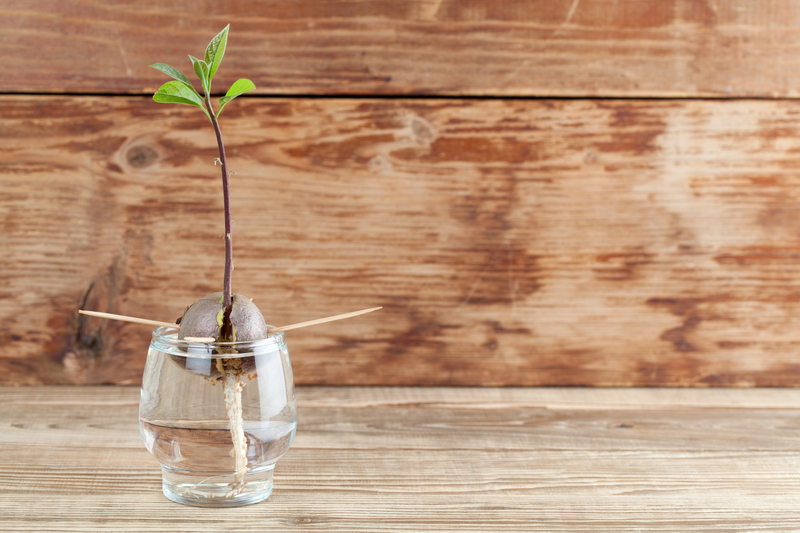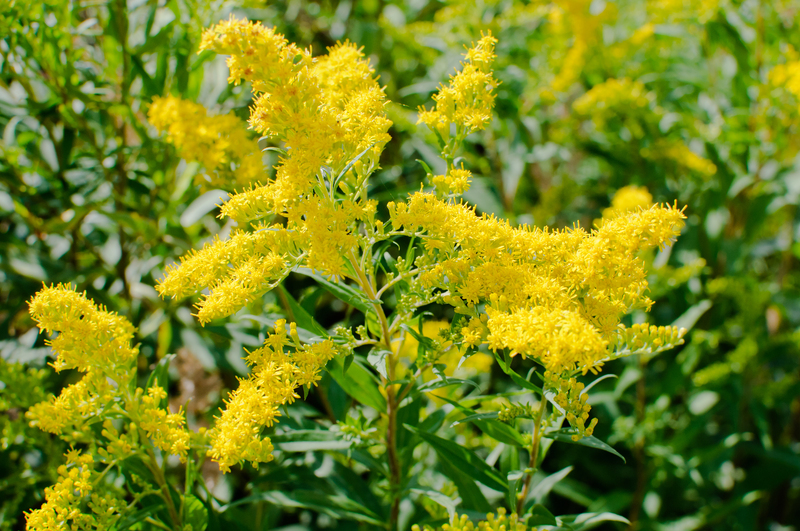Portable Gardens Made Simple With These Three Steps
Are you fascinated by the idea of growing your own plants, herbs, or vegetables but feel limited by space or a mobile lifestyle? Portable gardens are an innovative way to enjoy gardening anywhere--be it on a balcony, patio, windowsill, or even while moving to a new place. With just a few simple steps, you can create a thriving moveable garden that brings nature closer to you wherever you are.
This comprehensive guide will walk you through three essential steps for setting up portable gardens with ease, ensuring success for both beginners and seasoned green thumbs. Discover which containers to use, the best plants to grow, and the secrets of mobile garden care!

Why Choose a Portable Garden?
Portable gardens are perfect for urban dwellers, renters, frequent movers, or anyone with minimal outdoor space. Why settle for not gardening just because you lack a sprawling backyard? Movable gardens allow you to:
- Transform small spaces--balconies, rooftops, patios, and windowsills become lush green oases.
- Control sunlight and microclimate--move your plants to chase the sun or shelter them from harsh weather.
- Overcome poor soil--use high-quality potting mix instead of struggling with bad ground soil.
- Relocate when needed--take your garden with you if you move apartments or houses.
- Grow food in rented spaces--grow your own veggies and herbs without altering the property.
- Enjoy flexible, creative arrangements--redesign your garden layout anytime for aesthetics or function.
Who Benefits From Portable Gardening?
Whether you live in a high-rise apartment, have limited outdoor access, or enjoy rearranging your living space, portable gardens suit all lifestyles. These gardens are also perfect for students, elderly gardeners seeking accessible heights, and families that want children to experiment with easy, moveable gardens.
Step 1: Selecting the Perfect Portable Containers
The foundation of a portable garden lies in choosing the right containers. Containers come in countless shapes, sizes, and materials, so your first step is assessing your space, needs, and style. Here's how to get it right:
Key Features Of an Ideal Portable Garden Container
- Lightweight but sturdy: Opt for containers made of plastic, resin, fabric, light wood, or fiberglass. They're easy to move and won't crack or splinter easily.
- Drainage holes: Proper drainage is crucial to avoid waterlogged soil and dead plants.
- Handles or wheels: Integrated handles, grips, or caster wheels make a big difference, especially for larger containers.
- Appropriate size: Match the pot size to the plant's mature growth. Overcrowding stresses plants!
- Design and aesthetics: Your containers double as decor, adding charm to patios, balconies, or kitchens.
Innovative Ideas for Portable Garden Containers
- Grow bags: Breathable fabric bags are collapsible, lightweight, and provide good drainage.
- Tall planters with wheels: Get vertical--perfect for deep-rooted vegetables or flowers.
- Window boxes: Ideal for herbs and compact greens; attach to windowsills or railings.
- Self-watering containers: Save time and ensure consistent moisture for your plants.
- Repurposed items: Try buckets, crates, drawers, or metal tins for a quirky, sustainable look.
Tip: Clean old or repurposed containers thoroughly and drill extra holes if necessary to guarantee proper drainage.
Step 2: Choosing the Right Plants for Your Moveable Garden
Not all plants thrive in portable settings. For a flourishing portable garden, prioritize species that are compact, resilient, and well-suited for container life. Consider these key factors:
- Growth habit: Choose dwarf, bush, or compact varieties that won't outgrow their pots.
- Light requirements: Assess where the containers will live (full sun, part sun, shade).
- Seasonality: Some plants are perennials; others are seasonal. Know when to plant and when to swap out.
- Edibility or ornamental value: Grow what you'll use or enjoy!
Best Plants for Portable Container Gardens
- Herbs: Basil, parsley, chives, mint, cilantro, thyme, and oregano love containers--and your kitchen!
- Leafy greens: Lettuce, arugula, spinach, kale, Swiss chard; sow regularly for a steady harvest.
- Compact vegetables: Radishes, cherry tomatoes ('Tiny Tim', 'Patio Princess'), bush beans, mini peppers, dwarf carrots.
- Flowers: Pansies, marigolds, petunias, dwarf zinnia, violas for color and pollination.
- Succulents & cacti: Thrive in small, shallow pots and need little maintenance.
- Small fruit bushes: Strawberries, dwarf blueberries--look for varieties specifically bred for containers.
Pro tip: Pair plants with similar needs, such as grouping sun-lovers together or combining those that enjoy frequent watering.
Understanding Sunlight & Microclimates
The great advantage of moveable gardens is they let you "follow the sun." Use this flexibility to your benefit:
- Place sun-loving plants in the sunniest parts of your space (usually south-facing areas).
- Shift containers to the shade during heatwaves.
- Protect tender plants indoors during frost or storms.
This adaptability is what makes portable gardens so resilient and successful, even in unpredictable weather or changing seasons.
Step 3: Soil, Water, and Maintenance Tips for Easy Portable Gardening
Now that you have the perfect containers and chosen the best plants, it's time to ensure your portable container garden thrives. Soil quality, watering, and regular care are crucial to grow healthy, productive plants in a limited space.
Use High-Quality Potting Mixes
Never use garden soil in containers--it's too dense and may contain pests or diseases. Instead:
- Choose a premium potting mix that is loose, drains well, and is enriched with compost or slow-release fertilizer.
- For vegetables and herbs, look for mixes labeled "for edibles."
- Add perlite or vermiculite for extra drainage if needed.
- Refresh your potting mix each season to keep nutrients at optimal levels.
Water Wisely in Portable Planters
Container plants dry out faster than those in the ground, especially on sunny patios or balconies. To avoid under- or over-watering:
- Check soil moisture daily: Insert your finger up to an inch deep--water if it feels dry.
- Water early in the day to reduce evaporation and discourage fungal growth.
- Use mulch (bark chips, straw, or pebbles) on top of the soil to retain moisture.
- Consider self-watering pots or drip irrigation kits for hassle-free care.
- Empty trays beneath pots to avoid root rot.
Simple Maintenance for Healthy Portable Gardens
Good maintenance keeps your portable garden productive and beautiful:
- Fertilize regularly: Even rich potting soil runs low on nutrients over time. Use organic liquid fertilizers or slow-release pellets.
- Rotate or rearrange plants: To ensure each plant gets enough light and air, shift containers periodically.
- Prune and harvest often: Snip herbs and leafy greens to encourage new growth; remove dead flowers or leaves.
- Watch for pests: Inspect leaves and stems, and remove pests or use safe organic sprays as needed.
- Clean pots yearly: To prevent disease, wash containers with soap and water between uses.
With just these easy steps, your moveable garden will reward you with flowers, food, and fresh air!
Portable Garden Tips and Frequently Asked Questions
Can I Use Portable Gardens Indoors?
Absolutely! Many herbs, leafy greens, dwarf tomatoes, and edible flowers do well with bright indirect light. Use grow lights if natural light is limited, and enjoy a fresh harvest right from your kitchen or living area.
How Often Should I Move My Container Plants?
There's no strict rule--move plants when you need to optimize their sunlight, shelter from wind, or if changing seasons require indoor protection. Most portable gardens do well with a little rearranging every few weeks.
Do Portable Gardens Attract Pests?
Like any garden, pests can visit portable planters. However, their mobility allows you to easily isolate affected plants, treat them, and reduce spread. Inspect weekly for best results.
What Are Some Low-Maintenance Options for Busy Gardeners?
- Succulents, snake plant, and pothos: Hard to overwater and tolerant of neglect.
- Grow bags full of salad greens: Fast-growing, easy to harvest, and quick to replant.
- Self-watering planters with herbs: Ensure consistent growth even with a busy schedule.

Creative Portable Garden Projects
- Rolling vertical herb trolley: Attach wheels to a multi-shelf cart and line with pots of basil, parsley, rosemary, and mint--move it wherever you need fresh flavor!
- Portable salad patch: Use a large, shallow tote with drainage holes to grow mixed greens. Bring the whole mini-garden to your kitchen for picking at dinnertime.
- Pocket shoe organizer planter: Hang a fabric shoe organizer outdoors and fill each pocket with soil for compact herb or pansy gardens!
Experiment with unexpected containers and arrangements--for example, wheelbarrows, wooden wine boxes, or old toolboxes all provide stylish, practical homes for plants on the move.
Conclusion: Enjoy Effortless Greenery Anywhere with Portable Gardens
Portable gardens make it easy for anyone to create and nurture a green sanctuary--no matter where you live or how often you move. With the simple three-step method of selecting perfect containers, choosing plant varieties suited to mobility, and providing smart soil and care, you'll master the art of mini, moveable gardening.
From beginner-friendly herbs on an apartment windowsill to a lush mix of vegetables and flowers on castered planters, the possibilities are endless. Bring joy, flavor, and beauty into your daily life--one moveable garden at a time!
Get started today and join the growing movement of portable gardeners thriving everywhere!
```
